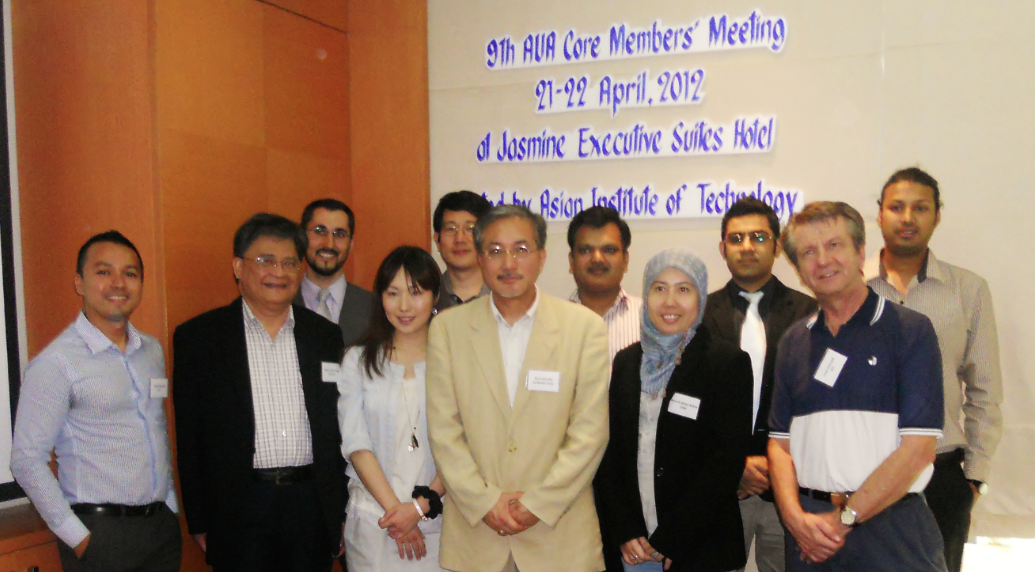University rankings are a hot topic across the hallowed halls of
academia worldwide. Here too, in Asia and the Pacific, many higher
education administrators seem caught up in the race to top regional
tables in the quest for status and success. Lately, university rankings
have emerged to grade “eco-friendly campuses” and “green universities”.
But for a number of the continent’s universities deeply committed to
the idea of integrating sustainable development education in to
postgraduate courses and curricula, there is an alternative approach.
Rejecting traditional university rankings as too homogenous and as
serving a “survival of the fittest” mentality, academics attached to
the Alternative University Appraisal (AUA) project have a profoundly
different model in mind.
A subgroup of the larger pan-Asia network for the Promotion of
Sustainability in Postgraduate Education and Research (ProSPER.Net),
AUA is a consortium of universities from Japan, Korea, China, Thailand,
Malaysia, and India working to hoist the flag of holistic sustainable
thinking high atop the region’s ivory towers.
At a meeting in Bangkok on April 21-22 hosted by the Asian Institute
of Technology (AIT), AUA officials stressed the importance of a
university appraisal system that looks at ratings systems and dispenses
with rankings.
“Rankings are easy, but they are Darwinian. We don’t like rankings,”
explained Associate Professor Eijun Senaha of Japan’s Hokkaido
University, who chairs the project. “There are many people doing
sustainability rankings, but we are different, and we are proud of
this.”
Creating sustainability assessment tools for universities based on
real-world, situational frameworks, as well as applicable monitoring
and evaluation methods and indicators – is the source of pride, it
seems.
So too, is its all-Asian focus. After three years of fine-tuning the
model framework, the final tools will be unveiled for the region in
June 2012.
According to Dr. Senaha, the new AUA system for academic assessment is
rooted in and framed by the developmental experience of Asia-Pacific
universities. That’s because many of the representatives felt
uncomfortable with simply importing American evaluation systems, such
as the well known Sustainability Tacking, Assessment & Rating
System or STARS, he said.
The system is underscored by the concept of self-review that
encourages self-awareness of a university’s particular strengths and
weaknesses. It is guided by a new set of indicators for measuring
sustainability in relation to the education, research, outreach and
governance taking place at Asian universities.
Overall, AUA’s mission is to raise the quality and impact of such
activities by providing appropriate benchmarking tools for educators.
It will also offer a model framework for sharing good practices and
facilitating inter-varsity dialogue.
For AUA core members Asian Institute of Technology, Yonsei University,
United Nations University Institute of Advanced Studies, TERI
University, United Nations University Institute for Software
Technology, and Universiti Sains Malaysia, the project recognizes the
vast diversity existing in higher education, and the multiple roles and
varying missions of tertiary institutions within different environments
across a very complex sustainable development milieu in Asia.
All agreed, however, that measuring the sustainability paradigm for
higher education is not easy.
“Our goal is to allow AUA universities to benefit by knowing where
they stand in terms of sustainable development through a consistent,
unified system for evaluation,” said Associate Professor T.J. Lah of
Korea’s Yonsei University, an expert in university governance.
Contrary to traditional rankings which stress measureable key
performance indicators like the number of citations, the AUA model
allows for intangible impacts not tallied in the traditional
tables.
Prof. Louis Hornyak, Director of the Center for Learning, Innovation
and Quality (CLIQ), AIT, described the challenge of assessing long-term
impacts of applied research for sustainable development. One research
paper can have multiple results that benefit society, he said, citing
eventual patent development and spin-off companies and services as
examples.
“We need to think beyond citations,” he stressed, “by keeping in mind
that research and development and sustainable development both include
the keyword ‘development.’”
According to Saeed-Ul-Hassan, a fellow at United Nations University
Institute for Software Technology based in Macau, this can be done for
research through a scientific analysis of new benchmark indicators.
Sometimes the results debunk conventional wisdom.
In his comparative rating of the biomass and biofuel research
conducted at 1574 universities in North America, Asia-Pacific, and
Europe, Universiti Sains Malaysia was deemed to be amongst the world’s
very best, beating out a who’s who of more famous global research
powerhouses.
Still, AUA officials caution against this line of thinking. “Ours is a
system for rating yourself to improve, not to compete,” said Professor
Mario T. Tabucanon, visiting professor at United Nations University in
Japan and professor emeritus at AIT.
Ultimately, facilitating and encouraging Asia-Pacific universities to
engage in education, research and outreach for sustainable development
is the vision of all. For Dr. Senaha, it’s important to believe a new
reality is possible for higher education. “To construct a sustainable
future in Asia we have to keep our ideals high – and sometimes we have
to dream.”
The meeting of the 9th Alternative University Appraisal (AUA) Core
Members' Meeting was hosted by AIT’s Center of Excellence on
Sustainable Development in the Context of Climate Change (SDCC) and
funded by Hokkaido University. The meeting was organized by Mr. Tomi
Haryadi, Project Manager, SDCC, and Mr. Aman Sangha, Project Officer,
SDCC.


